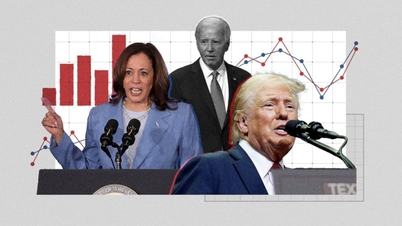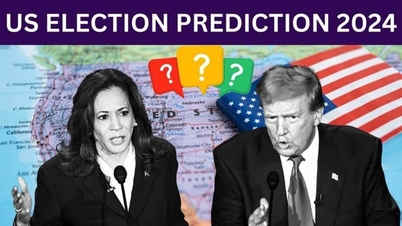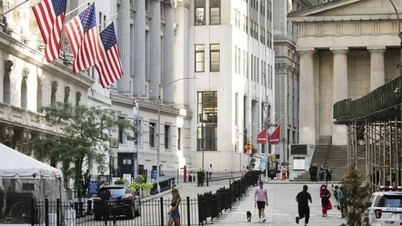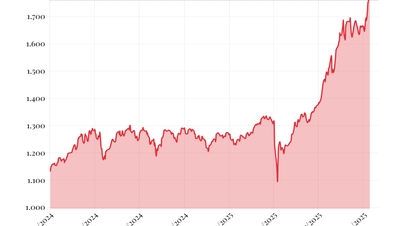
Nearly six months since US President Donald Trump first imposed tariffs on imports from most countries, economists ' warnings about the negative impact on the US economy are gradually being proven by actual figures, according to Turkey's Anadolu news agency. Many economists, including Adam Yousef, a policy researcher at the University of Cambridge, warn that these tariffs will do more harm than good to the US economy and consumers. Early signs show that the tariffs are starting to hurt, with the risk of further damage.
Consumer price inflation pressure
One of the expected consequences of tariffs is increased consumer price inflation. While US businesses initially delayed the passing on of tariff costs to consumers by “stockpiling” imports before the tariffs took effect, that is now showing signs of changing.
As profit margins are eroded by the current tariffs, most businesses will eventually pass the costs on to American consumers through price increases. Data and forecasts from reputable organizations support this view: JP Morgan estimates that President Trump’s tariffs could add $82.3 billion in new costs to all U.S. small and medium-sized businesses. Goldman Sachs predicts that U.S. companies will pass on about 70% of the direct costs of tariffs to consumers.
Recent data from the US Bureau of Labor Statistics shows that inflation is on the rise. The Consumer Price Index (CPI) rose 2.9% in the 12 months ending in August 2025. Notably, core inflation (excluding food and energy) rose to 3.1%. Notably, this increase occurred despite the fact that gasoline prices fell 6.6% and fuel oil prices fell 0.5% over the past 12 months.
This disparity implies that businesses are being forced to raise prices as profit margins shrink. The price increases are affecting a wide range of consumer goods, including household goods, entertainment and footwear.
Slowing economic growth and investment
With consumer spending accounting for nearly 70% of US GDP, higher prices are likely to lead to a decline in overall consumer spending, and recent macroeconomic data suggests this is happening. ADP Research's National Employment Report showed that private employers cut 32,000 jobs in September, while job creation slowed across most sectors. This job loss is likely to reduce overall consumer spending.
In a related move, the International Monetary Fund (IMF) has lowered its US growth forecast for 2025 to 1.8% (down from 2.7%), mainly due to the impact of tariffs.
While recent data from the US Bureau of Economic Analysis shows GDP growth of 3.0% in the second quarter of 2025, this is largely due to a decline in imports due to tariffs, masking weaknesses in hiring, business and residential investment.
One of the Trump administration’s main goals with tariffs is to revive American manufacturing, but current data and past history suggest that tariffs are unlikely to achieve that goal.
Importantly, tariffs are not just levied on the final product, but also on the intermediate goods used by US manufacturers. According to the US Federal Reserve, nearly a third of the intermediate goods used by US manufacturers are imported from abroad. Data from April of this year shows that the volume of intermediate goods imported has dropped significantly.
Domestic business investment fell by about 22% between the first and second quarters of 2025, while the manufacturing sector recorded seven consecutive months of decline, according to the Purchasing Managers' Index (PMI) from the Institute for Supply Management (ISM). These data suggest that tariffs are not helping the US manufacturing recovery.
Similar efforts throughout history have failed to achieve their goals: The Smoot-Hawley Tariff of the 1930s prolonged the Great Depression, led to widespread job losses, and failed to protect domestic industries. The US steel tariffs of the early 2000s, intended to protect the steel industry, increased the price of imported steel and caused significant job losses in the auto and construction sectors.
The combination of higher input costs and retaliatory tariffs from other countries means tariffs are unlikely to protect US manufacturers or boost industrial competitiveness in the long term.
In short, recent data and historical events suggest that tariffs are more likely to do harm than good to the US economy and consumers. They will create inflationary pressures, reduce consumer spending, reduce business investment and economic growth, and do not support the industrial competitiveness and manufacturing recovery that the Trump administration wants.
Source: https://baotintuc.vn/the-gioi/thue-quan-my-loi-ich-hay-ganh-nang-lam-phat-va-suy-giam-tang-truong-20251013164944961.htm












































































































Comment (0)